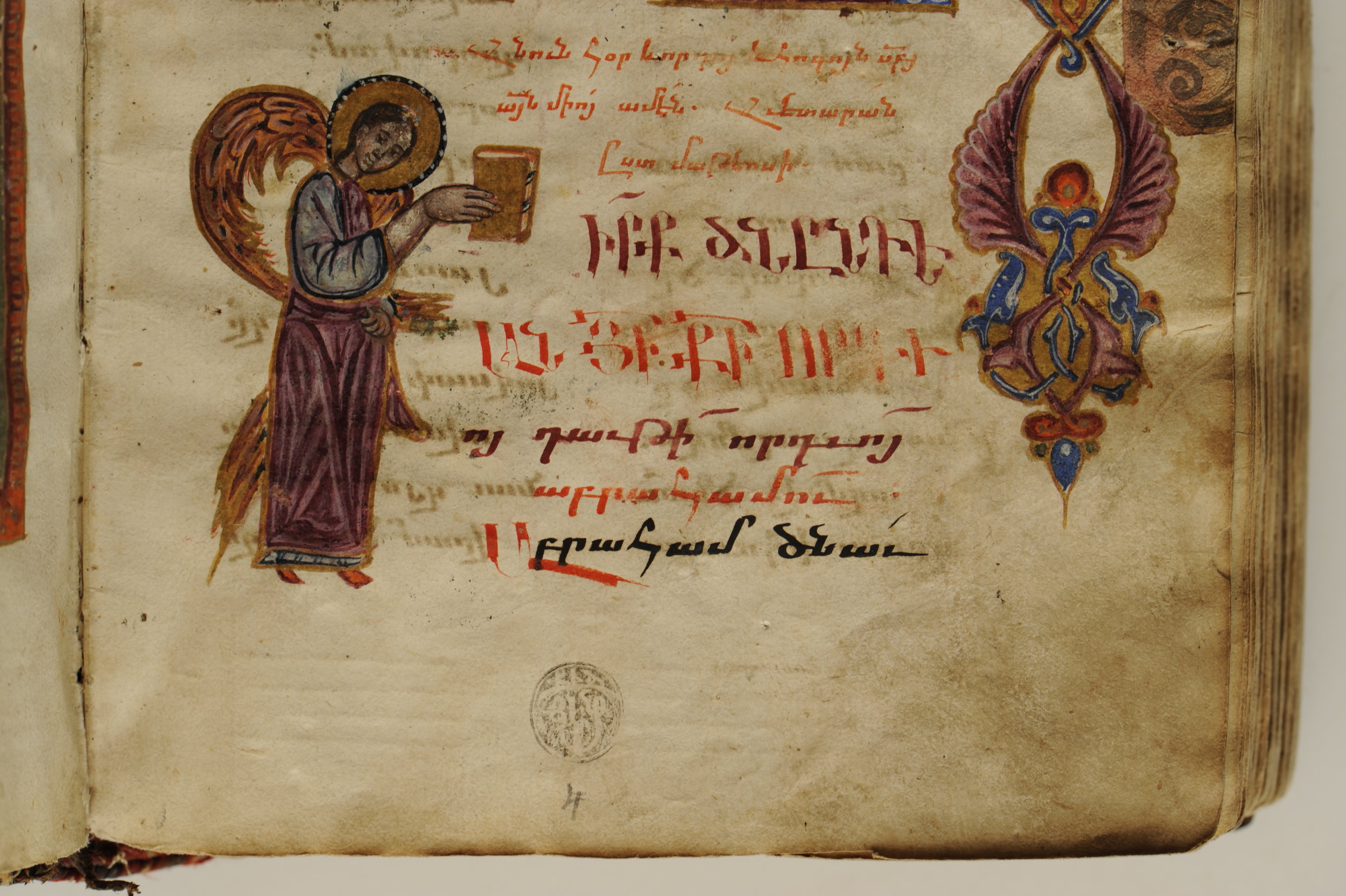Armenian Illuminated Manuscripts
The development of ornamentation in Armenian manuscripts emerged with the creation of the Armenian alphabet in the 5th century and the development of written literature. The tradition started gradually: initially, ornamentations appeared on the title pages of the manuscripts, and later, in “khorans”, in margins, and in the details of dominical and plot-oriented miniatures and on surrounding areas. Zoomorphic, floral, and geometrical motifs, as well as heavenly bodies and architectural structures were predominantly used in Armenian ornamentation. Hidden in inaccessible monasteries, these works were better protected from invading armies and escaped the destruction of their secular counterparts. Many of these surviving religious works were destroyed by the Turks during World War I, or looted and shipped to Germany to pay Turkey’s war debt for munitions and subsequently scattered internationally.























